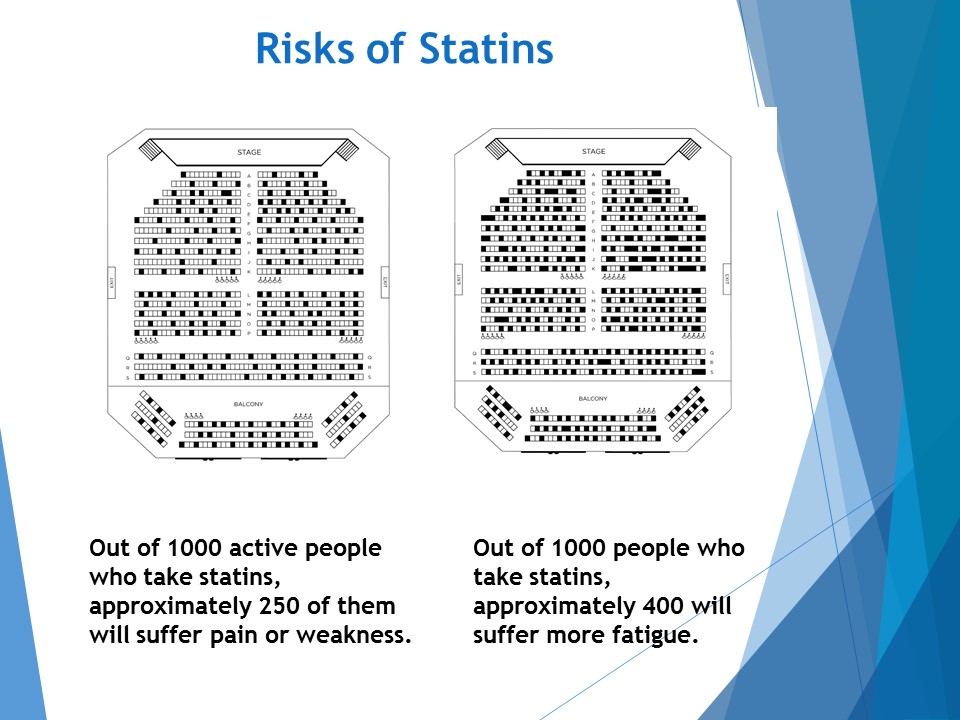
Visual Aids Empower Patients at the Doctor’s Office

“Effective visual aids can improve health care, reduce overtreatment and reduce costs,” said Dr. Erik Rifkin, an environmental scientist specializing in human health and ecological risks.
“Studies show that when patients understand actual risks and benefits of treatment, overtreatment and costs are reduced while patient satisfaction is increased,” said Dr. Andy Lazris, a board certified physician in Internal Medicine.
Shared decision making is a collaborative process that encourages health care providers and patients to have an open discussion about a patient’s care. The patient’s values and preferences are taken into consideration as well as their lifestyle habits to create a patient-centered care plan. In shared decision making, patients make the final decision on treatment plans.
Rifkin and Lazris are experts in interpreting health benefits and risks. They spoke at The Alliance’s Annual Seminar on May 16 and discussed how visual aids can promote shared decision making between doctors and patients.
Research led Rifkin and Lazris to the need for a concise graphic format to clearly explain the impact of a health care decision. That’s why they developed a visual aid to explain the odds of how a particular health care decision could help or harm you.
Their visual aid is called Benefit-Risk Characterization Theater (BRCT).
Benefit-Risk Characterization Theater
A graphic showing a theatre seating 1,000 people is shown to a patient. Seats are then shown as filled if a health care decision would negatively or positively impacted a patient.
For example, statins are a common family of prescription medication used to treat patients with high cholesterol. A high cholesterol score, particularly a low-density lipid (LDL) cholesterol score could indicate an increased heart health risk.
It is common for health care providers to prescribe a statin drug for a patient with a high LDL cholesterol level. However, if the patient has a normal calcium score, determined by a coronary calcium scan – a non-invasive CT scan of the heart – a statin drug will do nothing to reduce heart health risk.
Here’s how BRCT would show the risks of taking a statin drug.

Out of 1,000 active people who take statins, approximately 250 of them will suffer pain or weakness. Out of 1,000 people who take statins, approximately 400 will suffer more fatigue.
There are risks and benefits to any medical decision. It is important for each of us to take an active role in our health care through shared decision making.
“Shared decision making is informed consent. Without it quality is reduced, cost is increased and the safety of delivered health care is reduced,” said Dr. Rifkin.
How to Interpret Statistics
Data can be interpreted in a variety of statistical formats. Sometimes they can be misleading.
Every doctor should know the difference between absolute and relative differences. And be able to interpret benefits and risks to a patient using absolute differences. Here’s why.
When comparing data between two groups, an absolute difference subtracts the lower number from the higher number [B – A]. A relative difference is a ratio between the two numbers, without a defined starting point [B/A]. Therefore, a relative difference can seem to be much larger than an absolute difference.
| Risk for disease in group on medication A | Risk for disease in group on medication B | Absolute Difference [A – B] | Relative Difference [B/A] |
| 20% | 10% | 10% | 50% |
| 2% | 1% | 1% | 50% |
| 0.2% | 0.1% | 0.1% | 50% |
SOURCE: Effective Clinical Practice, Jan/Feb 2000; Primer on Absolute vs. Relative Differences.
It can be misleading to show the relative difference between the results of taking different medications. That’s why doctors should check treatment statistics and verify that the numbers are showing an absolute difference, not a relative difference. The absolute difference should always be used whenever explaining the risks or benefits of a potential treatment or procedure.
Here’s how Rifkin and Lazris use absolute difference and BRCT to explain the potential benefit of women receiving regular mammograms.
There’s a Lot of Information Out There
Patients largely get their information on medications from commercials on television, the Internet and other advertisements sponsored by pharmaceutical companies. These advertisements typically use relative differences in their statistics.
“Let the patient know what the real implications are of a potential treatment or procedure,” said Lazris.
Rifkin and Lazris believe that medical information is best explained using absolute numbers in a familiar format.
BRCT is a visual method that can be used as a part of shared decision making. “BRCT is much clearer to patients than quoting statistics verbally, said Lazris.
Patient empowerment tools such as BRCT assist doctors and patients to start a conversation about shared decision making. These conversations empower patients to make an informed decision about their own health care choices.
Takeaways For Self-Funded Employers
To benefit administrators from employers with self-funded health plans, Rifkin and Lazris gave the following advice.
- Advise employees to sign-up for a primary care provider (PCP). Knowing where to go and having a trusted relationship with a PCP can make a health care appointment less scary when you are sick.
- Encourage employees to seek out a PCP who is open to shared decision making and explains things in ways that they understand.
- Ask questions. Don’t just agree to having a test or procedure or taking a medication unless you understand both the risks and benefits.
“Always ask ‘Why?’” said Rifkin.







